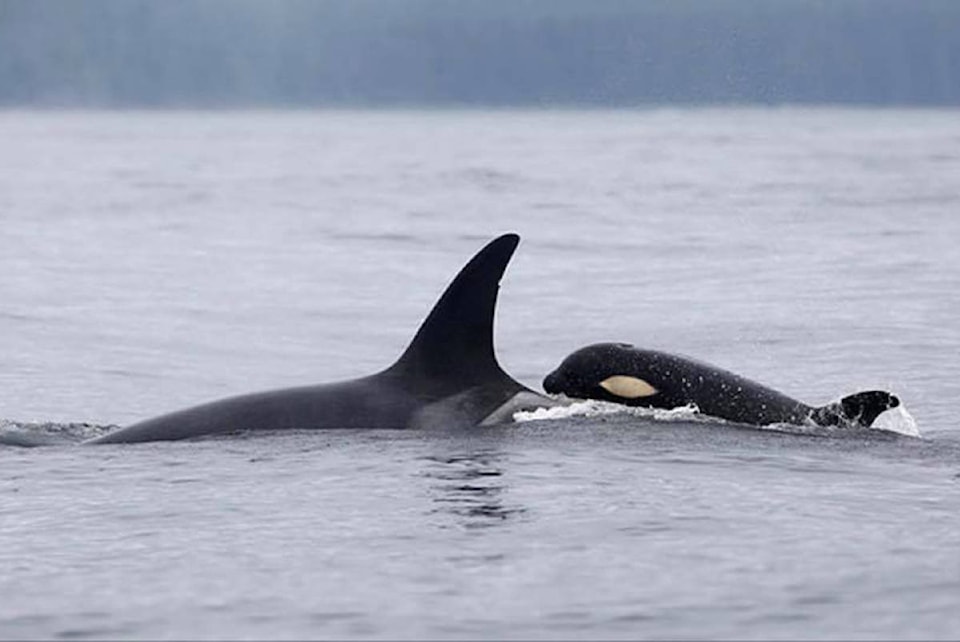After the devastating news of three resident orca deaths, a sighting of a “superpod” with two healthy-looking calves off the coast of Vancouver Island could be a positive sign.
The mammal-eating transient pods, or “Bigg’s orcas,” who can be spotted hunting along the coast between Alaska and California, have been enjoying the pinniped bounty of the Salish Sea this summer, providing Islanders with incredible sightings and share-worthy images of the orcas’ open saddle patches and rounded dorsal fins splashing through harbours and straits.
But southern residents – their smaller, echolocating, salmon-eating cousins, whose critical habitat spans the southern Strait of Georgia, Haro Strait and Juan de Fuca Strait – have been noticeably absent, and three were declared dead in early August after showing signs of malnutrition, plunging the total population to just 73.
READ ALSO: Three southern resident killer whales declared dead plunging population to 73
On Sunday, Mark Malleson encountered a resident orca superpod – a grouping with members of all three pods present –off the coast of Vancouver Island near Swiftsure Bank.
“I didn’t see them all, they were so spread out, but there was certainly representatives of all the [pods] there and we saw the two new calves,” he said. “That was my first time seeing the calves, I was quite excited to finally lay my eyes on them.”
| Baby girl J56 with her mom, J31 hunted with the superpod of resident orcas spotted near Vancouver Island on Sunday. The Southern Residents have been noticeably absent from their critical habitat this summer and were seen as far down the coast as California. (Submitted/Mark Malleson) |
Malleson, a photographer and research assistant with the Department of Fisheries and Oceans and the Washington-based Center for Whale Research, was on the water with colleague Joe Zelweitro, searching for a humpback whales seen off Sombrio Point a few days earlier.
After coming across a concentration of humpbacks, they headed west towards Swiftsure Bank, eventually, just five miles from the shore, they spotted the orcas hunting.
“It was great seeing them. They seemed very animated,” he said.
READ ALSO: Aerial photos reveal good and bad news about B.C.’s endangered killer whales
READ ALSO: Bigg’s orcas in the Salish Sea point to shifting habitat of resident killer whales
Lauren McWhinnie, orca researcher and University of Victoria professor, said the superpod sighting may indicate mating amongst the pods. In matriarchal orca society, males stay with their mothers. Interaction with other pods is necessary for breeding.
“When we see interactions with all three pods present, that’s a sign for hope,” she said.
But McWhinnie noted a number of pregnant resident whales have been unable to carry their babies to term, and even those born remain vulnerable until at least two years old.
The calves spotted Sunday – L124 and J56 – are both under one year.
READ ALSO: Killer whale pushing dead calf gets support from her pod
“It is a positive sign that the two calves have made it this far,” she said. “But we are, by no means, out of the woods yet.”
The residents’ summer absence isn’t totally unusual – they have been showing up in their critical habitat more frequently in late summer and early fall for the last few years – but this year was a significant change, she said.
“We’ve never had them this absent from the Salish Sea before in terms of documented history. The fact that they aren’t here is probably indicative that there’s just not the fish here to support them.”
nina.grossman@blackpress.ca
Like us on Facebook and follow us on Twitter
